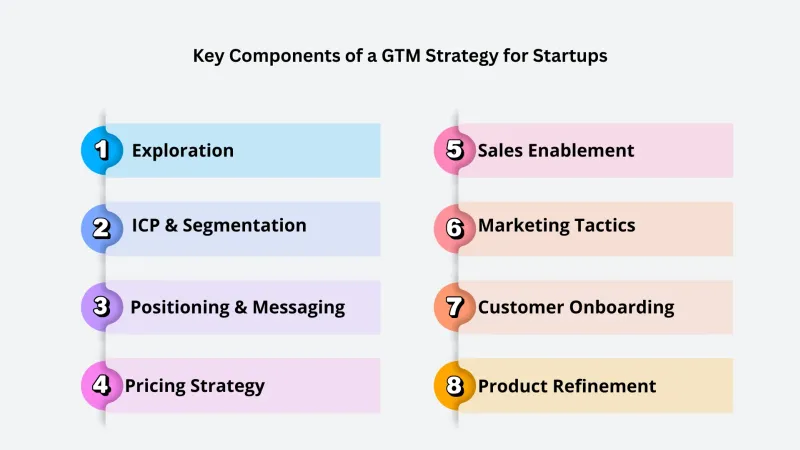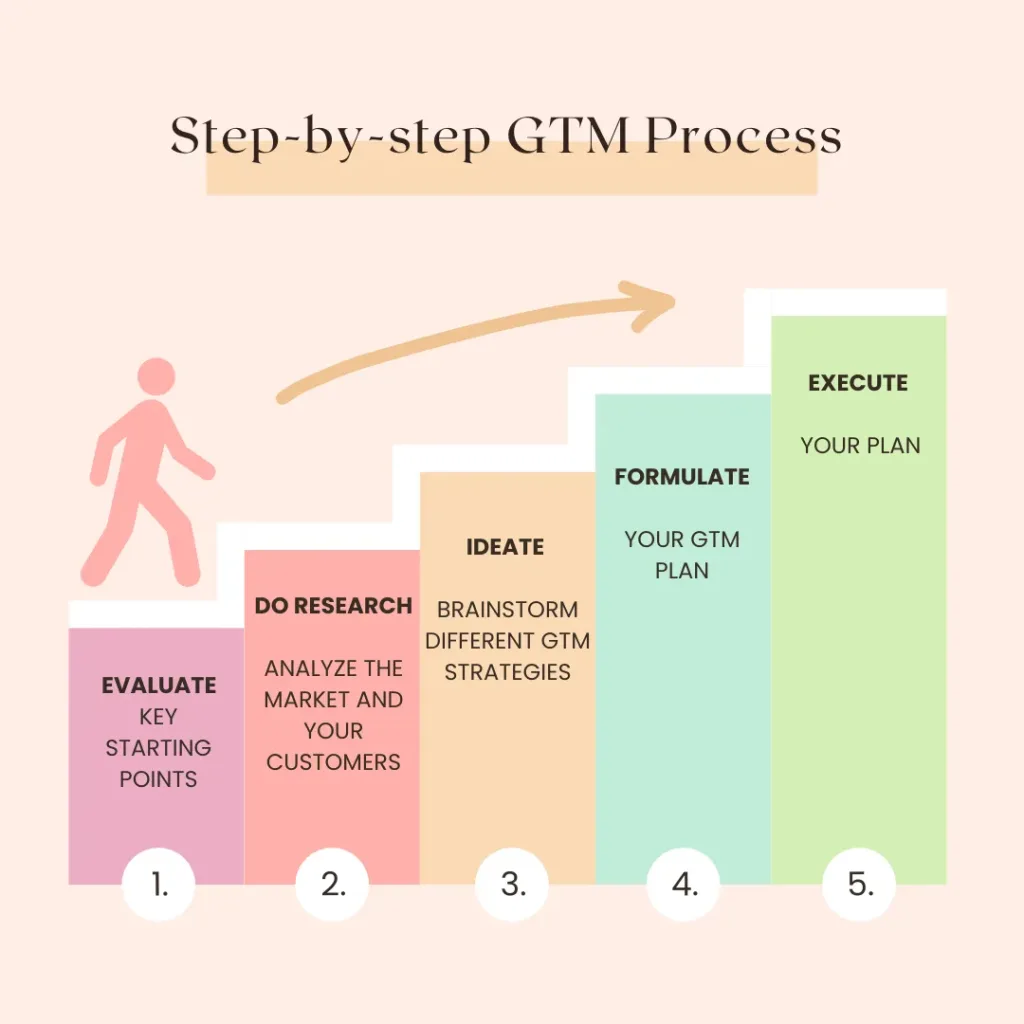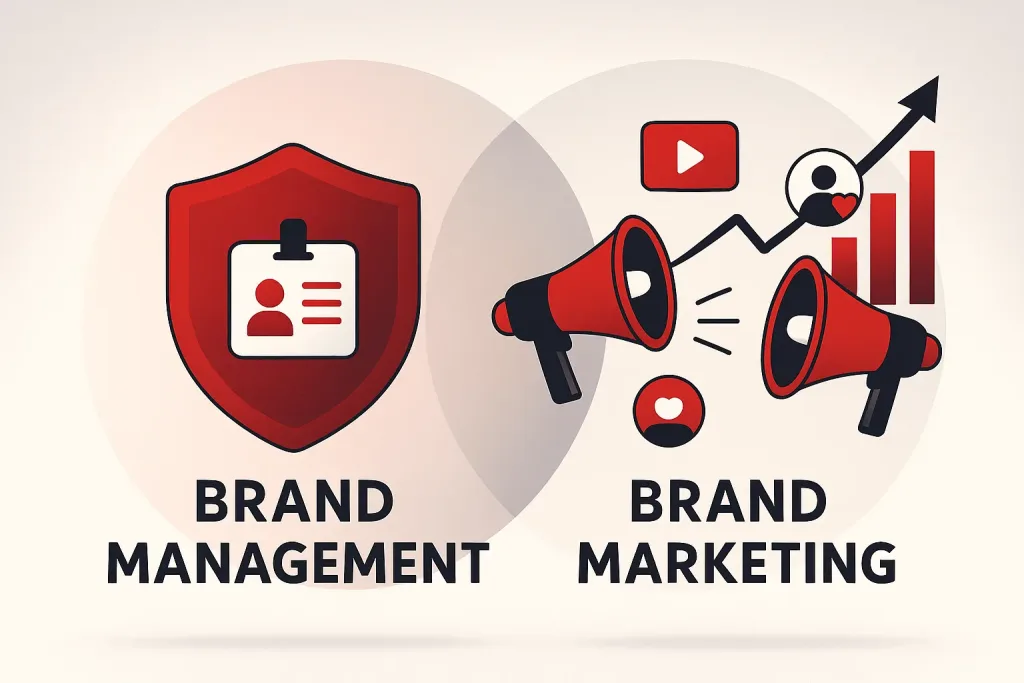So, you have an idea for your startup and you’re ready to hit the market, right? But not yet. Many business and startup founders have a just-throw-it-at-the-market attitude – that is, they believe as long as there is a product, there will be customers for it from the get-go. However, this is not the case and maybe this is the reason why 90% of startups fail. Yes, that’s right, having an idea and turning into a product or service is really amazing, but making a product is one thing and getting it into people’s homes is another, and this is where a go-to-market (GTM) strategy comes into play and gives you a plan for market entry. A go-to-market strategy is not just any marketing strategy but a practical guide for tech founders to ensure the success of their product in the market. In this article, we will break down and explain what a GTM strategy is and why it is essential for all startup founders, especially in the tech area.
What is a Go-To-Market Strategy?
In short, a go-to-market strategy is a detailed and practical guide for your startup to get your product into the hands of your target customers. It is a plan involving steps necessary for your product to succeed with new customers or in a new market.
In general, it can be said that a good GTM strategy helps you do the following:
- It helps you define your first ideal customer profile (ICP). As a tech founder a SaaS founder, or any other startup owner, you must have an idea of your target customer, after all.
- It will offer you tactics to turn these potential customer profiles into real customers who will buy your product.
- It will also help you build a relationship with your customers in a process of mutual learning in order to turn these ICPs into long-term and loyal customers of yours.
Time is the most valuable asset for a startup and the sooner and the more planned your product launch is, the sooner you can achieve your business goals. By giving you an accurate and step-by-step plan, a GTM strategy will prevent a floppy launch of the product and will place you on the right track from the get-go. It ensures that all your efforts, from marketing campaigns to sales activities, are aligned towards the same goal.
- Differences between a GTM Strategy and a General Marketing Strategy
In a tech founder’s mindset, a go-to-market strategy might be no different than a general marketing plan. They might as well think like “well, I already have a marketing plan, then why should I bother with another one?” But this is not the case, at all. A go-to-market strategy serves a completely distinct purpose compared to the usual marketing campaigns which are administered in the business. A GTM strategy is specifically tailored to the needs of a startup and the launch of a new product. The following are a short list of the differences that could make it easier for you to tell GTM from general marketing:
- A GTM strategy focuses on ‘today’ while a marketing plan focuses on a whole season. In other words, GTM focuses on introducing one specific offering to the market and seeks the early customers for your product while general marketing focuses on long-term goals.
- GTM is tactical while marketing is strategical.
- GTM is time-bound and it is directly connected to the introduction of a new product only, whereas your marketing plan takes a broader view and builds your brand over time.
- A general marketing plan usually follows a linear funnel approach, that is it focuses on awareness 🡺 consideration 🡺 decision, whereas a GTM strategy for startups has a flywheel pattern. It turns your customers into channels to refer others to your brand over and over again. In this way, they create a self-reinforcing cycle of growth.
- In general, we can say that the GTM strategy is the “before” and the marketing strategy is the “after”. One prepares your product for the launch and the other keeps everything going after that.
Why do First-time Tech Founders Need a GTM strategy?
Say, you are a SaaS or a tech founder; then why is a go-to-market strategy essential for you?
Research shows that there is usually a disconnect between how companies describe themselves and their marketing strategy – some operate as product-first and some sales-first. This misalignment is something that has to be resolved and the best time to resolve it is at the very beginning, the startup level.
A good GTM strategy for startups could deliver the following goals:
- Faster revenue generation
- Reduced launch risk
- Better coordination across teams
- An optimum use of resources
In addition to what was mentioned, a GTM strategy can also help you achieve the following:
- It can sketch a detailed account of your ideal customer.
As a tech founder, a clear understanding of your ideal customer adds a great deal to your existing knowledge of the market.
- It will walk you through a guided marketing plan.
As a tech founder, you need to have a certain number of customers, and to bring them, you need to communicate, send messages, establish a rapport – and even get rejected at times, and this is not possible without a detailed marketing plan. Early customers are harder to deal with, after all, and GTM will facilitate this communication for you.
- It can make it easier to attract the required funding for your startup.
Let’s be clear and honest, having to wait for customers when your tech startup is still at its toddler stage with no or little money in your bank account could be irritating. By putting you on the right track and while it is still working on your beta customers, GTM will put you in a position where you can raise money a little more easily, and God knows what a relief this can be.

Key Components of a GTM Strategy for Startups
It is true that every startup has a slightly different GTM strategy but there are some areas which all GTM strategies cover.
- Exploration: as tech founder, you must understand both your market and the context very well. Thorough market research will help you discover customer needs, market size, the current trends, and also an inside analysis of your product and its potentials. In short, it will tell you if there is a market for your product or not.
- ICP & Segmentation: your ideal customer profile or your ICP is a detailed description of the ideal customer of your tech service or your product. This profile describes the people who are most likely to buy from you and the people who will potentially benefit from your product. As a key component of a GTM strategy, this profile will help you have a thorough understanding of what motivates your ideal customer and it will analyze how these people make decisions. Having sketched a clear picture of your customer, you can develop messaging tactics that will resonate with your customer. GTM does this through a segmentation of the market. For each segment, you will clarify jobs-to-be-done, that is, what problem each segment is trying to solve, and in turn, this will lead to a clear understanding of your target audience.
- Positioning and Messaging: this is about how you position your company in the market and how you deliver your message. Conveying your unique value to the market is of uttermost significance. In order to have a successful messaging, you need to formulate two things:
- Your Unique Value Proposition (UVP): the primary value that you bring to the market which your rivals don’t.
- And your Unique Selling Proposition (USP): the specific features that have created your UVP.
Furthermore, Your messaging style will make you stand above your rivals and tells the users why they are going to need you and your product.
-
- Pricing strategy: pricing your product is a tricky task at the beginning of your tech career and you are likely to get it wrong, and this is specifically true in SaaS. As a hint, you might need to analyze your customer’s problem and price your product proportionate to the problem’s size. The price you come up with is usually a fraction of the size of your end-user’s problem. You may even need to reprice a few times after this stage, and it is okay!
- Sales enablement: this is the stage where you have to turn the sales potential to actual sales, turning potential customers to real buyers. This process could include creating demos, free trials, training sales rep, and anything that facilitates the sales process. Thinking about the sales channels is also part of this stage. Sales channels could include selling through distributors, resellers, or any other third-party channels that have already established a relationship with customers.
- Marketing tactics: this is the ‘general marketing’ part of GTM and could include content marketing, SEO, social media, webinars, even paid marketing, etc.
- Customer onboarding and customer retention: apart from onboarding new customers, it is also important to keep your older customers. This is usually done through research and also by studying feedbacks.
- Product refinement: as you continue to receive feedback from customers, you must keep refining your product or service. Keeping the feedback loop is essential if you want to continue delivering your UVP to the market.

A Step-by-step GTM Process for First-time Founders
- Evaluate key starting points
Every good GTM strategy must consider three main aspects:
Distribution channels: this is how you are planning to distribute your product. For instance, a SaaS business that has a software must decide whether the software will be downloaded by customers or it will be distributed through a third-party such as a big tech company, an insurance company or even a physician who already has customers.
Messaging and marketing tactics: this is about the language style you are going to use for your customers and how it will meet them and through what channel. Marketing tactics could include paid ads, social media influencers, and partnerships. But you must remember that you must keep marketing channels limited at the beginning.
An estimate of customer acquisition cost (CAC): Customer acquisition cost is the sales and marketing costs combined, divided by the number of customers acquired:
CAC = (Sales Costs + Marketing Costs) / Number of Customers Acquired
This will help you optimize your costs. The lower the sum number of this formula, the better for your startup.
- Do Research – Analyze the Market and Your Customers
Research is key to knowing your market and your customers. Major research activities include Customer segmentation and ICP. You must sketch your ideal customer profile and identify the segment of the market which is most attractive to your startup. Your research must then analyze the customers’ buying behavior to asses how much they are willing to pay and how easy it is to reach them. You must also analyze market trends as well as rules and regulations that could affect your launch. It is needless to say that you must also research your rivals to find out about their product offerings, pricing, messaging, and the channels they use.
As it is data-driven and since it gives you real insights, the research phase is crucial to your tech startup as it makes sure that your GTM strategy is grounded in reality and it is not just a fantasy.
- Ideate – brainstorm different GTM strategies
Now that your plan is rooted in research, you can start the ideation process and think of innovative tactics to reach your target customer. You can meet with your team and hold brainstorming sessions to find the most creative idea that gets you to your ideal customer. For instance, now that the results of your research are out and you know your customers’ buying behavior, you and your team can come up with the most innovative idea on how to reach your customer and which marketing tactic can help you achieve this.
- Formulate your GTM Plan
After you have brainstormed ideas, now it is time for an actual plan to enter the market. This will cover all the stages from segmentation, ICP, pricing and messaging to marketing channels, marketing campaigns and sales channels. You will create an actual plan and will select the best ideas of each stage and turn it into a cohesive written plan that will guide you through the actual process of launching your product.
- Execute your plan
A strategy is, in fact, no strategy if it is not executed. This is the stage where you put your plan into action and manage it constantly after launch. All the stages that were only on paper ever since will now enter the real world – you will activate your marketing campaigns, start communicating with your customers, start actual sales, and in one word, you will literally enter the market.
However, you must never forget that ‘track performance’ is really crucial. You have to constantly monitor KPIs and check the feedback. You must know, for instance, which channels are more successful and whether customers are dropping out. These will help you keep on track and not fall behind.
And remember, these steps to develop your GTM strategy are not linear, in fact. You might need to go back, say, to the ideation stage, if necessary, and brainstorm ideas again. Or you might have to reiterate parts of your strategy and change something here and there, if you believe your launch hasn’t been as successful as you wanted it to be.
Common Mistakes First-time Founders Make
Not taking the GTM strategy is the biggest mistake most tech founders make, but among those who do, there are some common mistake or inadequacies that will follow here:
Unclear or undefined ICP
Not knowing your ideal customer and getting only involved with your business practices could seriously damage your launch and sales. An undefined and blurry ICP could waste the company’s resources and could hamper your messaging style.
Premature focus on growth
Early on, your startup does not have enough resources and capabilities to focus on everything – you can only focus on one segment of the market; you do not have enough time, nor the capacity to diversify too soon.
Trusting the wrong sales channels
This is a very frequent mistake startups make and they think that partnership with some big tech company could help them sell their product better, but this is not always the case. Simply, even a multi-national tech company might not exactly know how to sell your product.
Overestimating the product
Many tech founders think that the product they have created will revolutionize the market and that people will be head over heels in love with it. However, time and again it happens that this mentality is soon debunked. Remember, people don’t care about what your product does; they only care if it can solve a problem in their life!
Examples of Successful GTM Strategies in Tech
It is always possible to learn from those startups that have made a successful example of themselves.
Slack
Slack is a B2B messaging tool and its clever marketing caught on early on and made them a success in the market. They first offered a free version which spread organically within teams, and then changed it to a paid plan. Their GTM focused on user-friendliness and the tool’s self-serve feature which users could modify for themselves made it viral within organizations.
Oatly
This company, which mainly focuses on oat drinks, is another example of a successful entry to the market. Oatly is an excellent example for a good choice of a marketing channel. Instead of going straight to supermarkets, their GTM focused on partnering with coffee shops in the US, making all cafe’s staffs their ambassadors across US cities. Their website is their other strong point in their marketing, which fits exactly into their business model and image.
GTM Strategy Checklist for First-Time Founders
As a tech founder, always keep yourself aligned with the following:
- First on, decide what problem your product solves in people’s lives
- Create, maintain, and redefine your ICP
- Decide on the message your company wants to deliver to the customers
- Research the ecosystem
- Do experiments
- Have the right pricing strategy
- Choose the marketing and sales channels carefully
- Study feedbacks and redefine your product/service
- Keep learning!
- Don’t go too far!
Conclusion
Having a GTM strategy is not just something nice to have in your startup, it is the crucial bridge between a brilliant startup idea and the actual launch of a product. You must remember that having a loose plan is always better than no pan at all; therefore, don’t be meticulous over every single detail but instead, focus on the general strategy that your GTM dictates.
You must remember that before going on with all the steps in GTM, there is one thing you have to think about: “what problem is my product solving?”. Once you have the answer, you can continue to the other steps in the plan. This means that you must always be realistic and not fall into traps; your GTM strategy must be grounded in reality, not fantasies.


